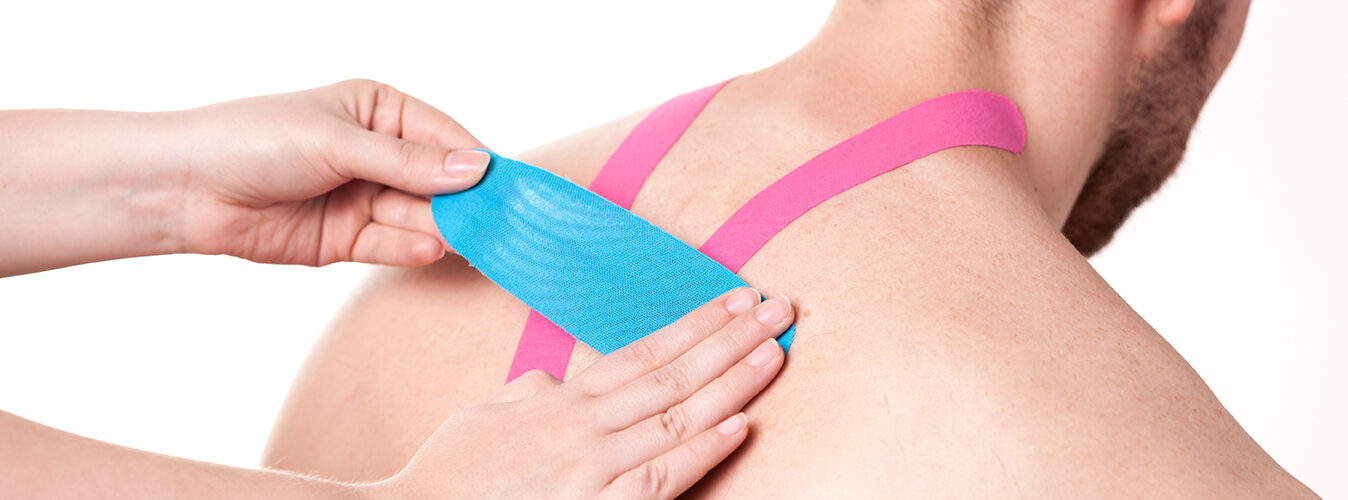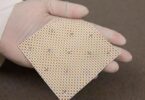Kinesiology Tape as a technological advance for the treatment of injuries. Learn more.
Kinesiology tape, also known as neuromuscular bandage or kinesiotape, is a type of adhesive tape or strip with a texture similar to that of human skin. In fact, it was developed by Japanese Dr. Kenzo Kase in the 1970s, with the aim of using a material with special elasticity for the treatment of injuries.
Kinesiology tape is a cotton bandage that generally uses acrylic adhesive to stick to the skin. In addition, it has certain characteristics of elasticity and breathability.
How does it work?
Unlike traditional sports bandages that limit movement, kinesiology tape allows a full range of movement.
Kinesiology tape can be used as long as it adheres to the skin, it will eventually loosen its tension and come off on its own. Also, the tape stays in place for 4 to 6 days on average. But, when applied to the hand or foot, it can come off more quickly.
Benefits:
- Helps muscles in their ability to contract.
- Relieves pain or fatigue and prevents possible cramps.
- Can significantly help solve problems arising from poor posture.
- It usually has good results in lymphatic drainage, as an anti-inflammatory and analgesic.
- Decreased pain.
- Better blood circulation.
Meaning of colors of kinesiology tape:
- Blue: used to reduce inflammation and pain.
- Red: used to improve blood circulation and increase muscle energy.
- Green: used to relieve pain and improve muscle function.
- Black: used to provide support and stabilization to joints
- Beige: Provides mild support and reduces skin irritation.
- Yellow: Stimulates the lymphatic system and reduces edema.
- Pink: Soothes muscle pain and improves joint function.
Who can use colored tapes?
Anyone who suffers from muscle or joint discomfort can benefit from using colored tapes. They are intended for anyone who needs alternative therapy. They are also intended for athletes, people with chronic pain, and people with arthritis.
Are colored bandages painful to apply?
It is important to know that colored bandages should not cause pain. In fact, they are often used to relieve pain and inflammation in muscles and joints. If not, you should inform your physiotherapist immediately so that he or she can arrange for the bandage to be applied.
How long can colored bandages be used?
The length of time colored bandages can be used in physiotherapy varies depending on the patient’s condition. The specialist will indicate the recommended duration of the bandage. On the other hand, you can also shower with them if they are waterproof.
How to apply kinesiology tape:
- Always apply on dry, clean, grease-free skin.
- Round the ends of the tapes to prevent the corners from easily coming off with any chafing or friction.
Are there any side effects from using colored bandages?
Generally, patients do not suffer from side effects when using colored bandages. However, some people may experience skin irritation or allergic reactions.
When not to use kinesiotape:
- Do not use this bandage if you are allergic to adhesive.
- Avoid applying the bandage on open wounds.
- Do not apply the taping too tightly.
- Remove it carefully to avoid damaging the skin.
- Bandages must be placed correctly, because they can cause problems in previously healthy muscles. That is why it is necessary for a physiotherapist who has been trained in the placement of this product to previously identify the patient’s problem and determine the appropriate treatment in their case.
Therefore, we can say that kinesiology tape is an innovative technological tool that offers numerous benefits for treating injuries and improving sports performance.








